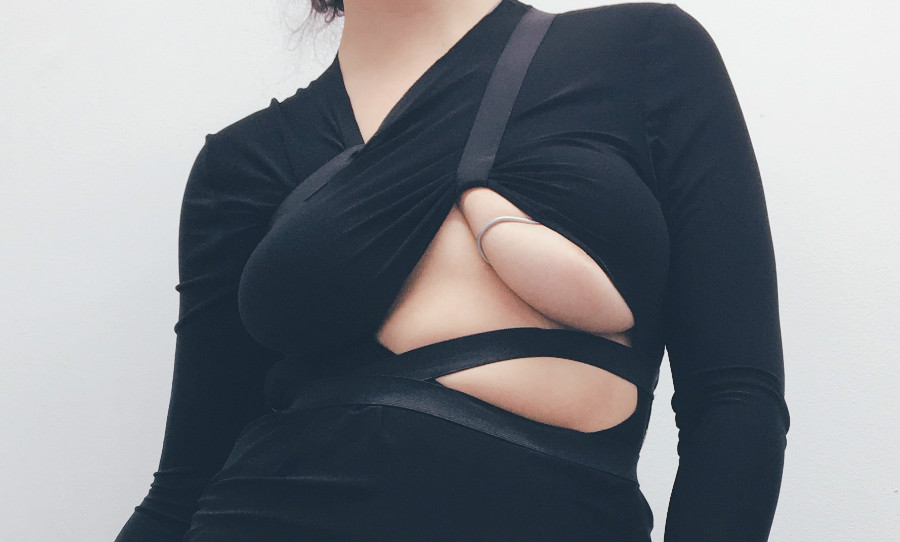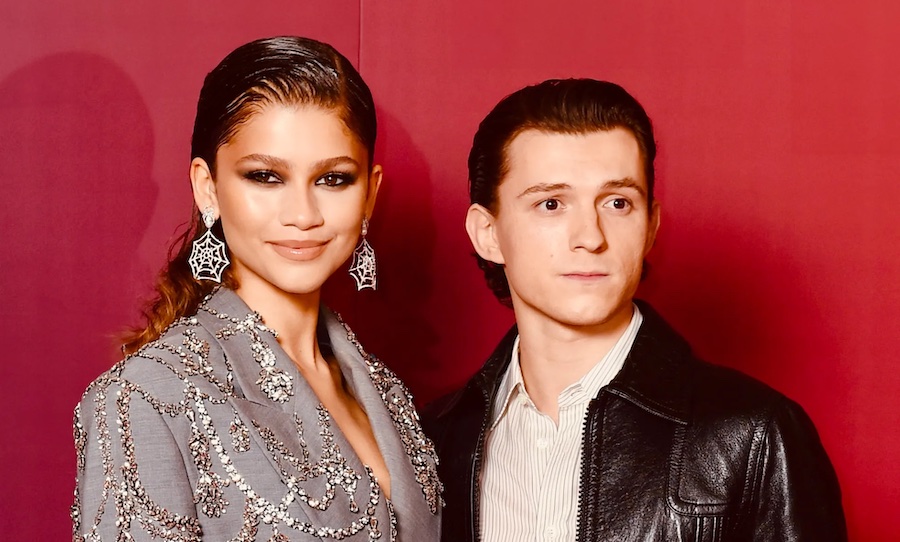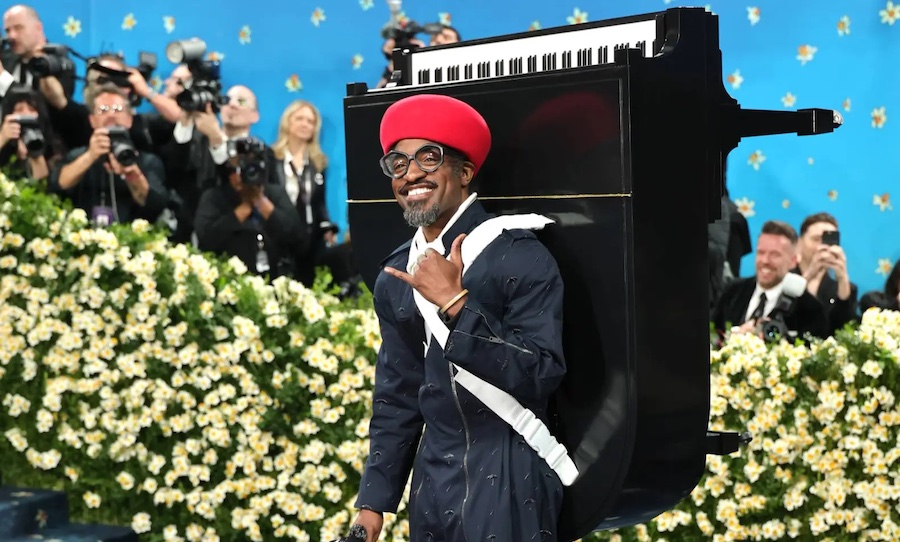Karoline Vitto is an emerging Brazilian designer who recently graduated her MA fashion course at the Royal College of Art in London. Her designs focus on highlighting areas that are usually seen as undesirable as beautiful. Because this collection is inspired by Karoline’s own journey of body image, she decided to model her own collection at her RCA graduate show, rather than enlisting a model to wear her designs.
Working with various metals to make unique, sculpted frames, Karoline then inserts these into clothing, such as the cut-out dresses seen in her graduate collection. This subtly draws the eye to areas that are usually hidden away, spotlighting the squish of fat under the armpit, the curve beneath the breast, or the bulge of flesh where the waist and top of the hip meet.
We caught up with her to find out more about her processes, and the inspiration behind her designs.

“I think it’s our responsibility as designers to consider what we put on a catwalk, or what kind of image we share and how much that will influence people.”
HAPPY: When did you first take an interest in fashion design?
KAROLINE: I think it has a lot to do with my mum, she is a very creative person and taught me how to draw, sew, and be very free artistically. My grandpa, her dad, was a shoemaker and I remember going to his atelier and being fascinated by what he made, he looked like a magical creature in the workshop amongst all the tools and his work. I just really admired how they used their hands to create beautiful things.
HAPPY: Where did the inspiration behind your collection come from?
KAROLINE: It came from a very personal place, my relationship with my own body. It started with a waist clincher I had bought in Brazil a couple of years ago and a photo series I did with the help of my friend and designer Julia Hauss. We took some photos of me trying to put that very tight piece on, and undressing it. The goal was to show the bits of flesh that would pop out of it and around it, to question why we sometimes submit our bodies to tummy tucker underwear, or shape wear, in order to hide what is only natural.

HAPPY: What inspired you to design clothes that draw attention to areas that aren’t typically seen as desirable?
KAROLINE: Well, I basically wanted to shed light upon those areas and turn them from a taboo into something that could be seen as quite beautiful. I think the whole process from primary research with the portrait series I did, and the experimentations on my body, naturally evolved into that.
HAPPY: What inspired you to experiment with compression and release in your designs and what was the desired impact of this?
KAROLINE: It was an evolution of the waist clincher idea that I used in my research and my personal experiences with lingerie and my own clothes that were always marking and pressuring my body. So, if those marks would happen as a consequence of garments that were designed not considering the softness of a size 16 body, I wanted to subvert that and design how the flesh would pop in the first place, and that would inform the garments.
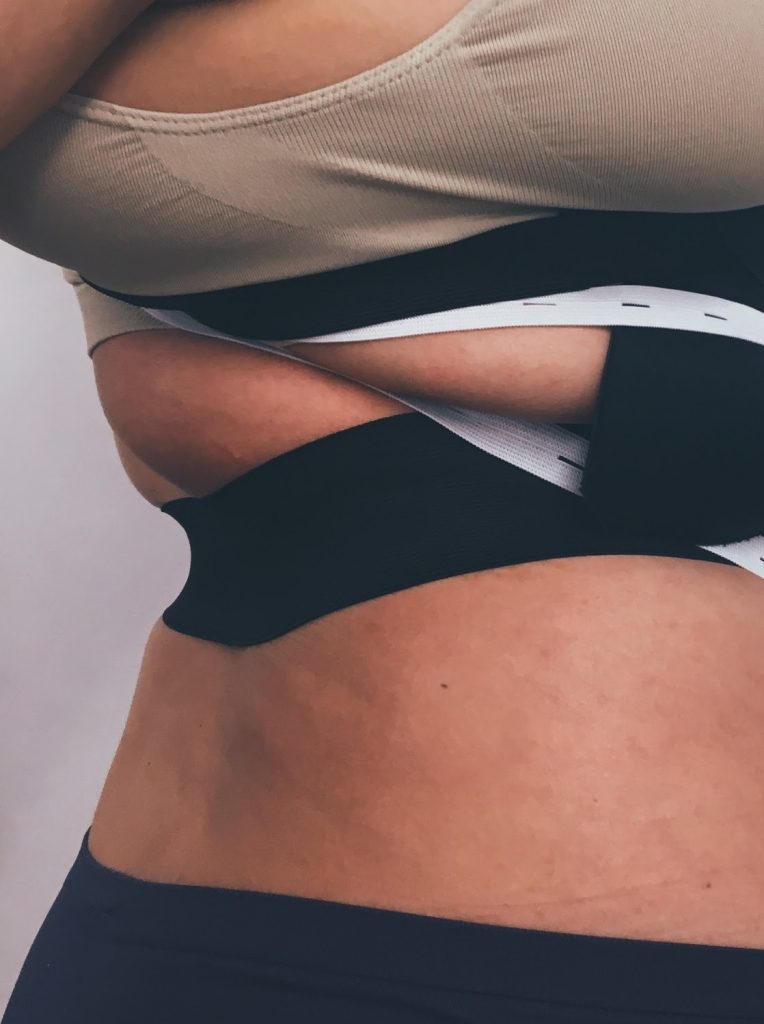
HAPPY: What’s your creative space like? How does it influence your work?
KAROLINE: I tend to keep my space very tidy and organised in the earlier stages of the process, I’m a bit of a perfectionist in that sense. But I like to have all my images around me, all the tests on the rail, and all the tools available at hand. So my desk is almost like an offline version of Photoshop, with all the tools on one side, and the work in the middle! It just helps to keep organised as I test one thing too many times to get it exactly how I want it.
HAPPY: How does being from Brazil and living in London affect your designs?
KAROLINE: For me the biggest difference is that, when I lived in Brazil, I felt very influenced by the beauty culture that is so present there. I don’t think I would have felt brave enough to show areas of my body that people tend to consider flaws. But I’ve moved to the UK almost four years ago, so it was interesting to see that, at the same time I was going through this internal process of revisiting my own ideals of body and beauty, so many girls in Brazil were doing the same, and feminism and the body positive movement exploded there immensely. It’s really interesting to see the parallel, so I guess I kept being influenced even overseas.
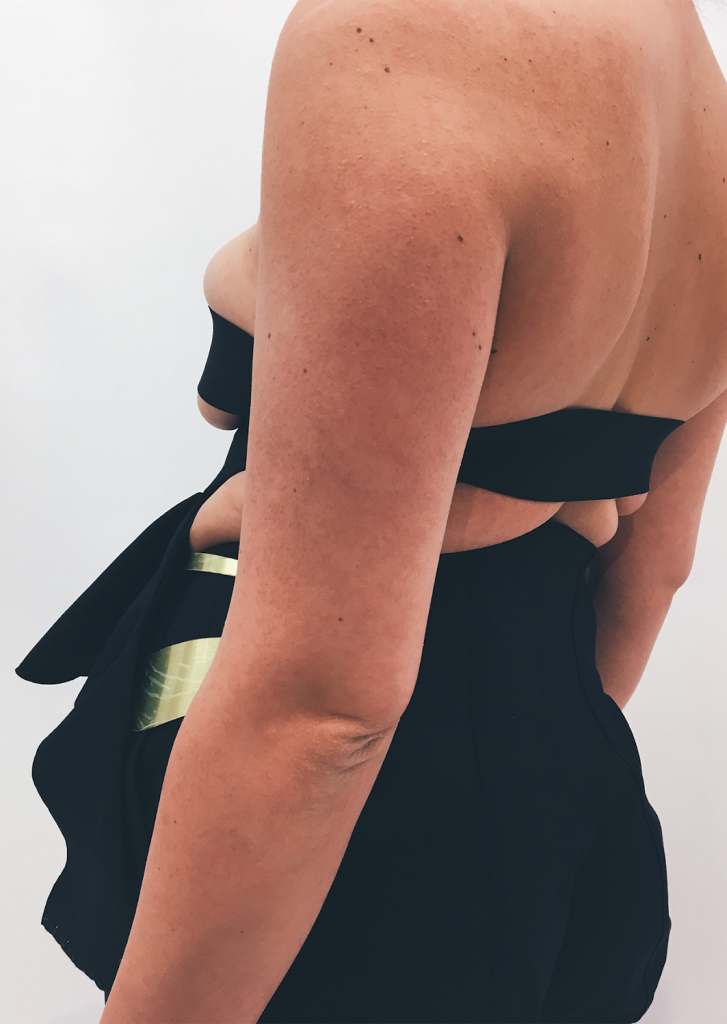
HAPPY: Were you always drawn to this kind of design, or was this a sudden shift in your approach? When did you realise that this is the direction that you wanted to take?
KAROLINE: My aesthetics changed a lot ever since I started studying Fashion, but over the past three years or so I have been going on a similar route. I just felt very pushed to find what was true to myself and something quite personal and meaningful by my tutor David Kappo at Central Saint Martins, when I did the Graduate Diploma in Fashion course there, in 2016/2017.
HAPPY: How would you say your style has your style developed over time?
KAROLINE: I think I have become more sure of the type of body I was designing for and all the lines have become more flattering, and the construction has evolved into something more particular to my designs.
HAPPY: What do you think about the way fashion can influence someone’s perception of the body image of themselves and others?
KAROLINE: I think it’s our responsibility as designers to consider what we put on a catwalk, or what kind of image we share and how much that will influence people. Ultimately, it’s about representativity, the more you see something out there, the more you will consider it ‘normal’. And we all should feel like we can be part of it and be accepted. There is still a long road to go, but I’m just glad there has been more diversity and inclusivity in the past few years, and a range of body types is more present than what I remember seeing as a child.

HAPPY: How did you approach your RCA fashion show? What made you decide to model your collection?
KAROLINE: My whole research and process have been about my body and my relationship with it, and the way I moved in those garments, what it did to the image. So I wanted to have a performative element to it, I didn’t want it to be a classic model walk, so in the end it just made sense that I should be the one walking it. I worked with friends and models throughout the process though, and it’s interesting as every one of them almost lent a bit of their own personality to the photo, transforming the garment, really. So for the show I wanted to show something closer to the original images of my research.
HAPPY: What or who is your ideal collaboration?
KAROLINE: I am very open to collaborations at the moment, if I feel like the artist/designer/brand has a similar vision to mine, or if it’s something that could complement my practice. I would actually love to publish a book with all the photography from my process, or even do an exhibition of them, I worked with so many amazing people and it could be a great way to materialise all this work.
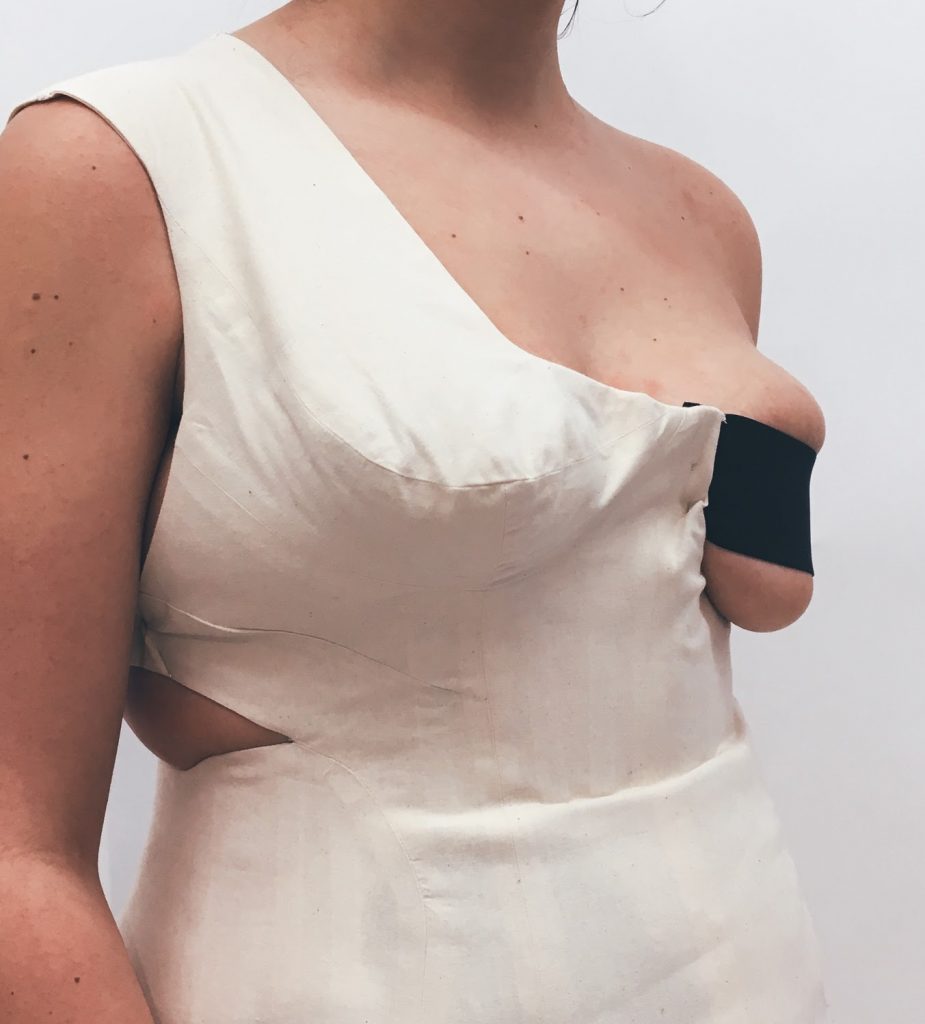
HAPPY: What’s the single most important piece of creative advice you’ve been given?
KAROLINE: I remember one day a little over a year ago, I was feeling completely lost, and I asked to have a chat with our course leader, Zowie [Broach]. She showed me a book of personal research she had, and it was about ‘rain’. She had hundreds of photos of anything that caught her attention related to rain, and water, and raincoats. And as you went through the book you started to get a real feel of what that was about. You couldn’t put into words. So she told me to start collecting my archive compulsively, just do what felt really natural, and accumulate it, until I had the same kind of feeling from it. And so I did. I started to take photos without really knowing where that was heading and it ended up in my current work. So I think the most important advice was to really keep it personal and passionate, don’t think about the ending before you start.
